Mario Kart is a series of kart racing games and a spin-off Mario franchise developed and published by Nintendo. Players compete in go-kart races while using various power-up items. It features characters and courses mostly from the Mario series as well as other gaming franchises such as The Legend of Zelda, Animal Crossing, F-Zero, Excitebike, and Splatoon.

Super Mario Kart is a kart racing game developed and published by Nintendo for the Super Nintendo Entertainment System (SNES). The first game in the Mario Kart series, it was released in Japan and North America in 1992, and in Europe the following year in 1993. Selling 8.76 million copies worldwide, the game went on to become the fourth best-selling SNES game of all time. Super Mario Kart was re-released on the Wii's Virtual Console in 2009, on the Wii U's Virtual Console in 2013, and on the New Nintendo 3DS's Virtual Console in 2016. Nintendo re-released Super Mario Kart in 2017 as part of the company's Super NES Classic Edition.

Mario Kart: Super Circuit is a 2001 kart racing game for the Game Boy Advance (GBA). It is the third Mario Kart game and retains its predecessors' gameplay: as a Mario franchise character, the player races opponents around tracks based on locales from the Super Mario platform games. Tracks contain obstacles and power-ups that respectively hamper and aid the player's progress. Super Circuit includes various single-player and multiplayer game modes, including a Grand Prix racing mode and a last man standing battle mode.
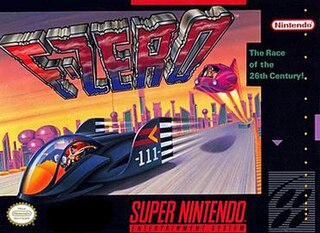
F-Zero is a racing video game developed and published by Nintendo for the Super Nintendo Entertainment System. The game was released in Japan on November 21, 1990, in North America in August 1991, and in Europe in 1992. F-Zero is the first game of the F-Zero series and was a launch title for the SNES. It was released for the Virtual Console service on various Nintendo platforms over the years and as part of the Super NES Classic Edition in 2017.

F-Zero X is a futuristic racing video game for the Nintendo 64 console. Developed by Nintendo's EAD division, it was released in Japan, North America, and Europe in 1998. In 2000, the Expansion Kit was released in Japan, including a track and vehicle editor. The original game was ported in 2004 to the iQue Player in China. It had Virtual Console re-releases on the Wii in 2007 and the Wii U around nine years later. On March 11, 2022, the game was re-released on Nintendo Switch Online + Expansion Pack, featuring online multiplayer.
Ridge Racer is a racing video game series developed and published for arcade systems and home game consoles by Bandai Namco Entertainment, formerly Namco. The first game, Ridge Racer (1993), was originally released in arcades for the Namco System 22 hardware, later ported to the PlayStation two years later as a launch title. It was met with several sequels and spin-off games for multiple platforms, the latest being the mobile game Ridge Racer Draw & Drift (2016) with the latest mainline game being Ridge Racer 7 (2006). Gameplay involves the player racing against computer-controlled opponents to be the first to finish in a race. Drifting is a core aspect of the series, and is used to keep speed while turning corners.
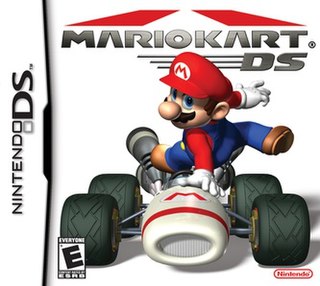
Mario Kart DS is a 2005 kart racing video game developed by Nintendo EAD Group No. 1 and published by Nintendo for the Nintendo DS handheld game console. It was released in November 2005 in North America, Europe, and Australia, and on December 8, 2005, in Japan. The game was re-released for the Wii U's Virtual Console in North America and PAL regions in April 2015 and in Japan in May 2016.
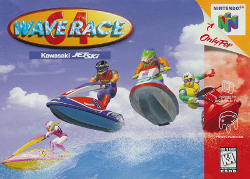
Wave Race 64 is a 1996 racing video game developed and published by Nintendo for the Nintendo 64. Gameplay involves the player racing on a personal watercraft on a variety of courses while successfully manoeuvring the vehicle around various buoys. A multiplayer mode where two players can compete against each other on a chosen course is also included. The game supports the Controller Pak, which allows players to transfer saved data from one game cartridge to another.

Beetle Adventure Racing! is a racing game released for the Nintendo 64 in 1999. It was developed by Paradigm Entertainment along with EA Canada and published by Electronic Arts. Each vehicle in the game is a Volkswagen New Beetle, which was released the previous year. The gameplay involves racing other players on unlocked tracks, finding and destroying crates, and collecting colored ladybugs while battling other players. The single-player championship offers three circuits and a secret bonus circuit with new vehicles and tracks available upon completion.

ATV: Quad Power Racing 2 is a racing video game developed by Climax Brighton and published by Acclaim Entertainment under their AKA Acclaim label for PlayStation 2, GameCube and Xbox. It's a sequel to ATV: Quad Power Racing. The game is notable for its inclusion of a three-wheeled ATV, not seen in any other video games, and not sold in the real world since the late 1980s.

Need for Speed: Carbon is a 2006 racing video game and the tenth installment in the Need for Speed series. Developed by EA Black Box, Rovio Mobile and published by Electronic Arts, it was released on October 31, 2006, for the PlayStation 2, PlayStation 3, Xbox, Xbox 360, GameCube, Windows, and Mac OS X, and on November 19, 2006 as a launch title for the Wii and in 2008 for arcade cabinets. The game sees players conducting illegal street races within the fictional city of Palmont City, with the game's main story taking place after the events of Need for Speed: Most Wanted and focusing on the player's character taking control of the city from various street-racing gangs. While the gameplay is similar to its predecessor, Carbon introduced a number of new features, including crews and racing wingmen, Touge-styled racing events, and greater customization options.

Need for Speed: ProStreet is a 2007 racing video game developed by EA Black Box and published by Electronic Arts. It is the eleventh installment in the Need for Speed series and a follow-up to Need for Speed: Carbon. Unlike its immediate predecessors, which focused on the contemporary illegal street racing scene, ProStreet focuses on legal circuit races that take place on closed tracks. The game blends elements of both sim and arcade racing games, requiring players to customize and tune cars for various race modes. Most races take place in real-world locations such as the Portland International Raceway, Mondello Park, and Autopolis.
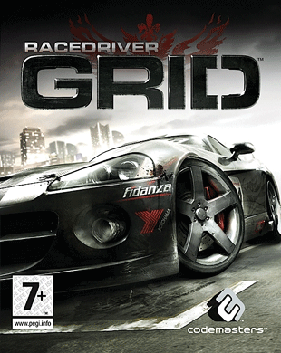
Race Driver: Grid is a 2008 racing video game developed and published by Codemasters for Microsoft Windows, PlayStation 3, Xbox 360, Nintendo DS, arcade, Java ME and OS X. It is the first game in the Grid series.
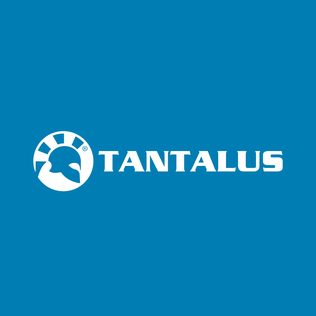
Tantalus Media is an Australian video game developer based in Melbourne. It was founded in 1994 by programmers Andrew Bailey and Trevor Nuridin. Since its inception, Tantalus has developed almost 100 games and has won multiple game awards. In March 2021, Keywords Studios acquired 85% of Tantalus Media for US$46.8 million.

ATV: Quad Power Racing is a racing video game developed by Climax Development and published by Acclaim Entertainment under their Acclaim Sports banner for the PlayStation. A Game Boy Advance was released two years later and developed by Tantalus Interactive, and was released under the AKA Acclaim banner.

F1 2009 is a video game based on the 2009 season of the Formula One motor racing series. It was released on the Wii and PlayStation Portable in 2009 on 16 November in North America, 19 November in the PAL region and 20 November in the United Kingdom. The game was also released on iOS on 14 December for £6.99. The PlayStation Portable version was also available as a download from the PlayStation Store from 16 November.

Colin McRae: Dirt 2 is a racing video game developed and published by Codemasters in 2009, first for the Nintendo DS, PlayStation 3, PlayStation Portable, Wii and Xbox 360, and then later for PC platforms. It is the sequel to Colin McRae: Dirt. Dirt 2 is the first game in the series since McRae's death in 2007 and the last to feature his name in the title. It is also the first and only game in the series to be available on a Nintendo home console and the last game in the series to be released on handhelds.

Need for Speed: Nitro is a racing video game and the fourteenth title of the Need for Speed series. It was published by Electronic Arts for the Wii and Nintendo DS platforms. It is also one of only two games in the franchise to date to not be made for PC and the only game of the franchise to be released only for Nintendo consoles. It was announced in January as part of a three-game announcement that includes Need for Speed: Shift and Need for Speed: World. The game was developed by EA Montreal who have previous experience with Nintendo titles, although the DS version was developed separately by Firebrand Games' Florida studio. An improved version of the DS edition of the game, Need for Speed: Nitro-X, was released for DSiWare on November 26, 2010.

3D Pixel Racing is an arcade-style racing game developed by Vidia and released in 2011. The game was released as a downloadable game on WiiWare and in the App Store for iOS devices. 3D Pixel Racing heavily capitalizes on its graphical uniqueness. Unlike most 3D games, every object in 3D Pixel Racing is made of multi-colored voxels that are reminiscent of old 8-bit games from the 1970s and 80's.

Majesco Entertainment Company is an American video game publisher and distributor based in Hazlet, New Jersey. The company was founded as Majesco Sales in Edison, New Jersey in 1986, and was a privately held company until acquiring operation-less company ConnectivCorp in a reverse merger takeover, becoming its subsidiary and thus a public company on December 5, 2003. ConnectivCorp later changed its name to Majesco Holdings Inc. on April 13, 2004.

















